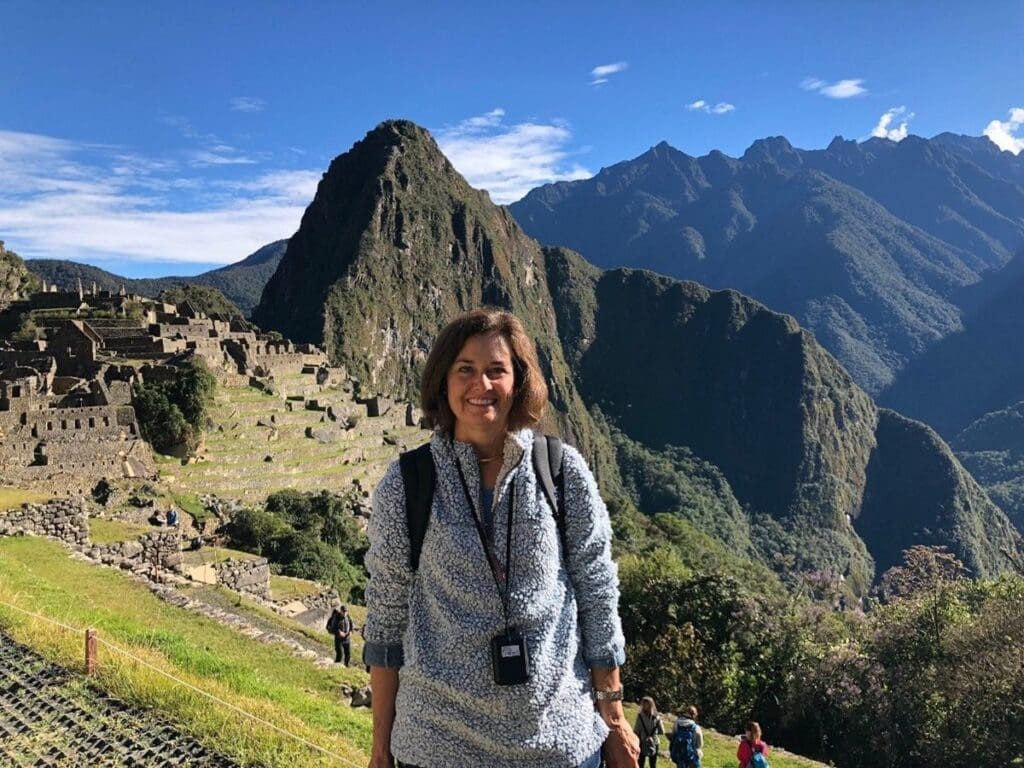
Why do you like to travel?
Do you like to discover new things? Or do you travel to learn more about yourself and the world around you? Or is it because you like being exposed to new places, people, cultures? Travel is a great way to develop a wider world view. It helps to open our mind…to realize there is no one way to live life. This is what makes our world a beautiful place!
When I travel, I not only want to “see” a destination, but I want to experience it. I like to smell, hear, taste and feel it. And this is why immersive travel allows us to dive headfirst into the experiences that allow us to do just that, and so much more.

Peru was one of my bucket list destinations and I am so glad I had the opportunity to experience the sights, sounds, sensations and flavors up close and personal with a group of friends! From Lima, to Cusco to the Sacred Valley to Machu Picchu and more…it is a magical country that is steeped in tradition, culture, music, art and fabulous cuisine!

Most often we think of Machu Picchu when talking about Peru. Yes, that is one of the major highlights and rightly so. But a visit to awe-inspiring Machu Picchu isn’t the only way to explore the Incan culture. When traveling to Peru, there is no meal more traditional than pachamanca. This is a fabulous feast to celebrate the blessings of Pachamama and the historic significance is profound.
Pachamanca is a Peruvian specialty that dates back to Inca Empire. The term pachamanca in Quechua is a combination of “pacha”: earth and “manca”: cook pot; thus, “cook pot of the earth”. However, in the south’s Aymara language, “manca” is food, so then: “earth food”. Both interpretations clearly demonstrate the concept.

Although this tradition is commonly prepared in the Andes, it can also be found in other areas across Peru. It is more than just a style of cooking- it is a communal social rite in which eaters enjoy delectable vegetables and meats that have gathered the energy of the earth, from Pachamama, the Earth Mother. No other style of cooking shows such a strong connection to the forces of nature.
The tradition of pachamanca is deeply rooted in Andean cultures even today. To celebrate the harvest and give thanks to Pachamama for blessing the earth, the food is returned to the earth to be cooked and the participants of the celebration eat from the earth.

It takes about 3 hours to cook everything…so settle in, because it’ll be a while before the feast is ready! The preparation starts by digging a large hole in the ground. The large hole serves as the cooking pit and is called a huatia. Next, you’ll gather rocks to heat over the flame; be careful to only choose volcanic stone that can withstand intense heat. Then, the hot rocks will be spread inside the pit to create an oven effect.
What will you be feasting on? The food will be added to the oven in layers—tough root vegetables on the bottom, banana-wrapped meat next, with corn, beans and additional hot rocks on top. The ingredients included in the feast may vary depending on the region of Peru, but no matter where you are, the cooking of pachamanca is a way of honoring Pachamama, the earth goddess or mother earth.

Today, Pachamanca is the centerpiece of many Peruvian gatherings, whether it be a local holiday in the Andes or a party in the highlands just outside of Lima. It’s a great way to feed a crowd, and reiterates the important tie between food, ritual, and people in Peruvian culture.
I’m sure you are wondering how it tasted! Absolutely delicious!!! Now it’s time for you to experience Peru in an authentic way like we did so you can check it off your bucket list!
If you want your 2020 “Vacation Do Over”, let’s start planning your next adventure now! Peru included!!!
There will be limited availability in 2021 because many people “lifted and shifted” their vacation from this year.
Don’t wait!


















